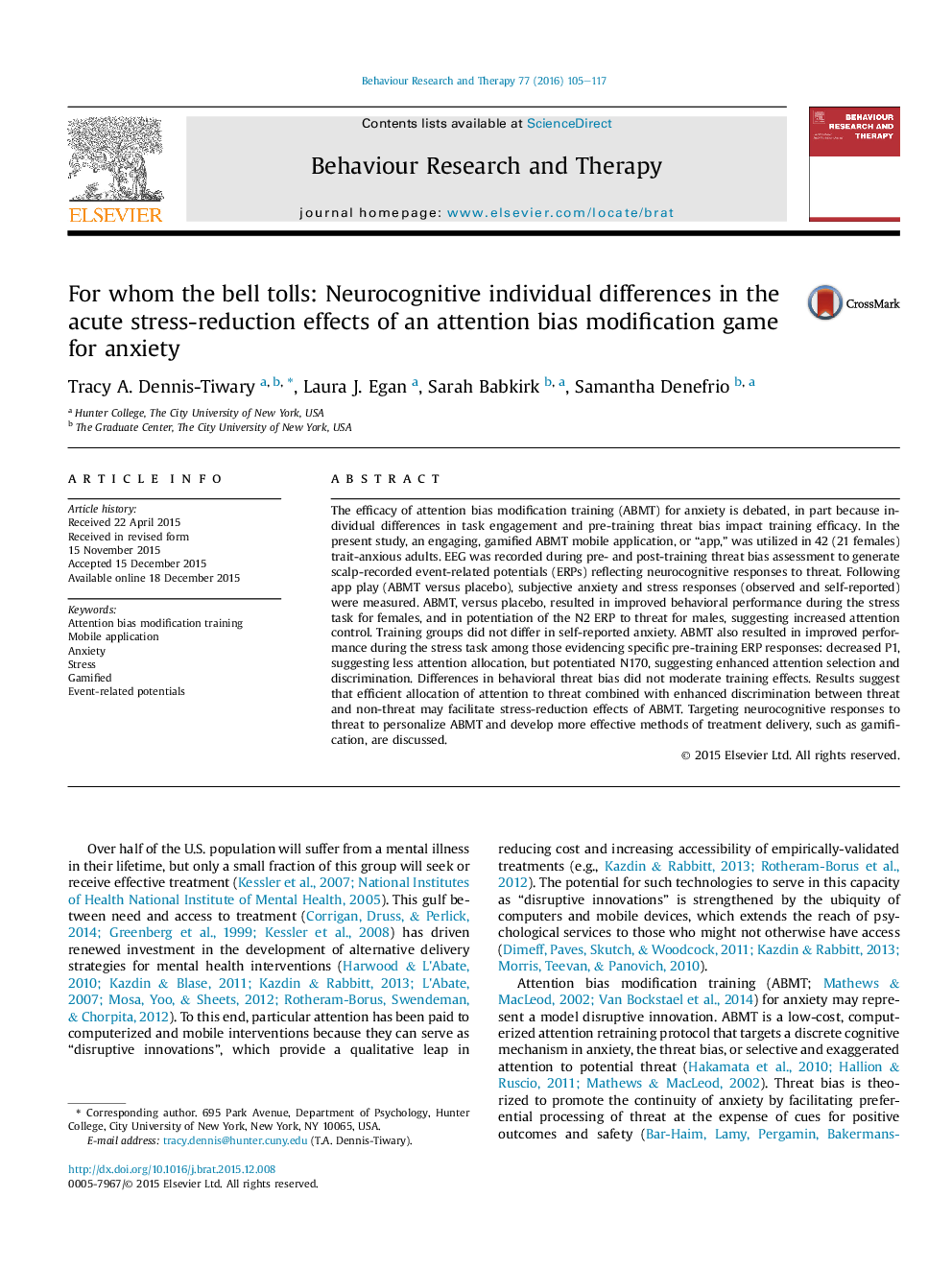| کد مقاله | کد نشریه | سال انتشار | مقاله انگلیسی | نسخه تمام متن |
|---|---|---|---|---|
| 901795 | 1472772 | 2016 | 13 صفحه PDF | دانلود رایگان |
• We test stress and anxiety-reduction effects of mobile, gamified attention bias modification.
• The moderating effects of individual differences in neurocognitive responses to threat are tested.
• Reductions in stress differed by gender and pattern of neurocognitive response to threat.
The efficacy of attention bias modification training (ABMT) for anxiety is debated, in part because individual differences in task engagement and pre-training threat bias impact training efficacy. In the present study, an engaging, gamified ABMT mobile application, or “app,” was utilized in 42 (21 females) trait-anxious adults. EEG was recorded during pre- and post-training threat bias assessment to generate scalp-recorded event-related potentials (ERPs) reflecting neurocognitive responses to threat. Following app play (ABMT versus placebo), subjective anxiety and stress responses (observed and self-reported) were measured. ABMT, versus placebo, resulted in improved behavioral performance during the stress task for females, and in potentiation of the N2 ERP to threat for males, suggesting increased attention control. Training groups did not differ in self-reported anxiety. ABMT also resulted in improved performance during the stress task among those evidencing specific pre-training ERP responses: decreased P1, suggesting less attention allocation, but potentiated N170, suggesting enhanced attention selection and discrimination. Differences in behavioral threat bias did not moderate training effects. Results suggest that efficient allocation of attention to threat combined with enhanced discrimination between threat and non-threat may facilitate stress-reduction effects of ABMT. Targeting neurocognitive responses to threat to personalize ABMT and develop more effective methods of treatment delivery, such as gamification, are discussed.
Journal: Behaviour Research and Therapy - Volume 77, February 2016, Pages 105–117
